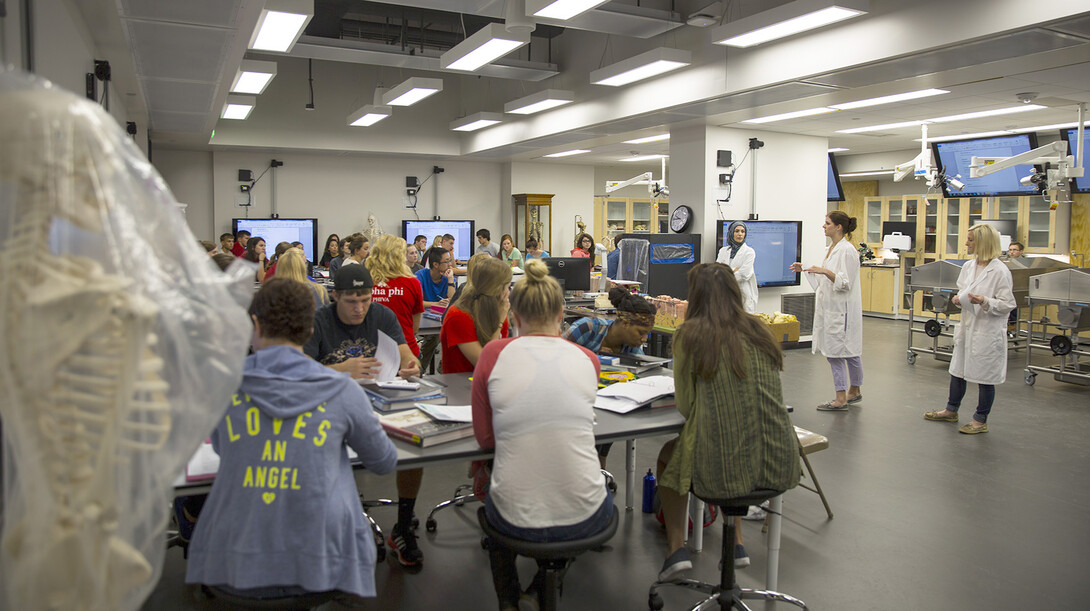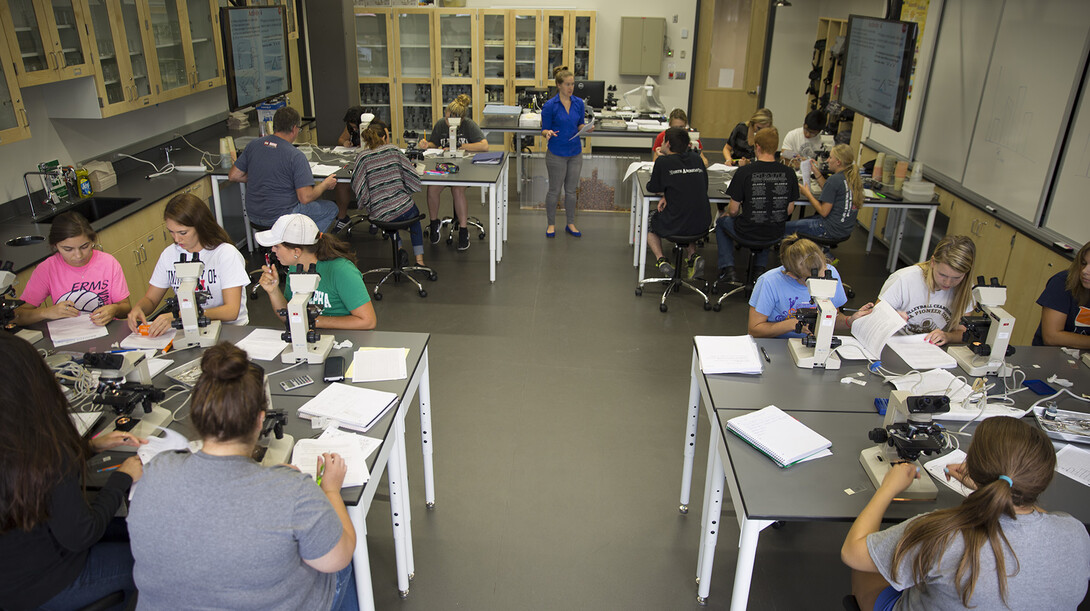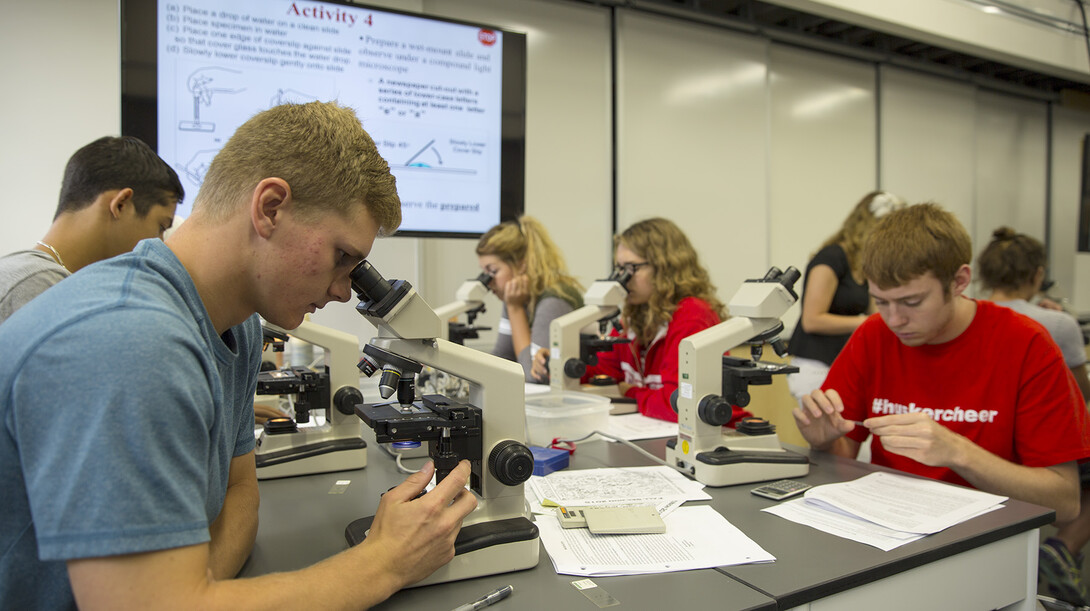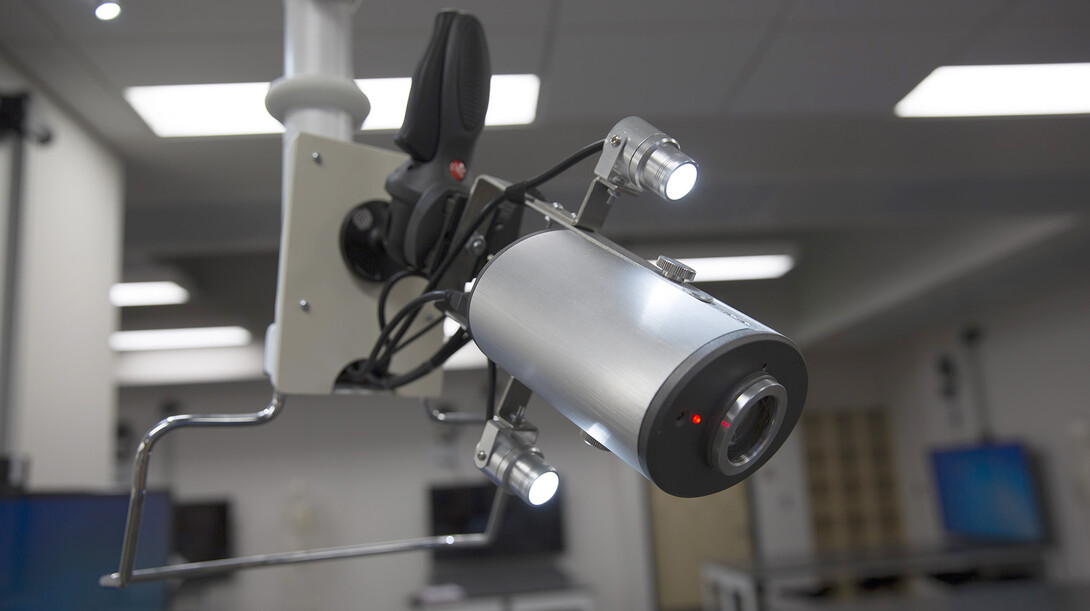
An $8.1 million renovation is transforming 40-year-old biological sciences laboratories in the University of Nebraska–Lincoln’s Manter Hall into modern lab spaces designed to further digital learning and foster interdisciplinary collaborations.
“This project is another investment in the campus’s core academic space that supports our undergraduate teaching mission,” said Lance C. Pérez, associate vice chancellor for academic affairs.
The first phase of the project, completed with the start of UNL’s fall semester, includes an expanded anatomy lab, five revamped biological sciences labs and new departmental offices. The second phase will add another four biological sciences labs, a student interaction area and recruitment offices to the first floor of Manter Hall. Additional project elements include elevator, restroom and accessibility improvements.
“The goal of this project is to modernize lab space that opened in 1975 while making more efficient use of the space that is available,” said John Osterman, interim director and associate professor of biological sciences. “When complete, this reconfiguration will increase the size of our labs and the total teaching space while upgrading technology throughout.”
The original Manter Hall lab design allowed about 49 square feet of space per student enrolled — which is half of the national average among higher education institutions, Osterman said. The renovation increases the total to 100 square feet per student.
A primary upgrade combined two small anatomy rooms into a single, large lab that can accommodate up to 60 students. The reconfigured space includes six cadaver tanks, a specialized high-definition camera system, group work stations and an air exchange system that replaces air in the lab 22 times each hour.
“Before this project, the entire first floor of Manter Hall smelled like formaldehyde,” said Grant Watson, construction manager for UNL. “Now, that smell is even hard to detect within the anatomy lab itself. The new air handling system is amazing.”
The camera system is also custom engineered, offering students working on cadaver dissection to capture high-definition images to study. The cameras are joined to overhead arm mounts (similar to those used in dental offices) through a specialized part engineered by Greg Carstens, an audio/video design engineer with UNL’s information technology services.
Creating the part to link the cameras and arm mounts, along with integrating LED spotlights instead of surgery-grade lights, saved UNL more than $100,000 on the project.
Each of the labs feature monitors that are used for daily quizzes and to communicate lab tasks/images. They can be controlled by individual study groups or by teaching assistants through centralized teaching stations.
The labs also use tables that can be reconfigured to best meet laboratory lesson needs. And the spaces offer white boards — some of which hide storage shelving — and “writing walls” that students can use for assignments.
Osterman said the labs are all designed to encourage collaboration as students work through experiments and activities.
“Our labs are now active learning classrooms,” Osterman said. “The intent is to have students interact with each other to enhance the learning process.”
The project will place all labs along a single hallway, a design that enhances traffic flow through the building. Also, departmental offices that were on the third floor have now moved to the fourth floor of Manter Hall.
Along with office space, the departmental office has two meeting rooms — one a large, traditional conference room, the other designed with a smaller table to encourage collaboration during presentations. An interactive classroom for 30 students is also on the fourth floor.
“This is a night and day transformation,” Watson said. “From a space designed in the 1970s to a modern, technology-rich learning environment.”











